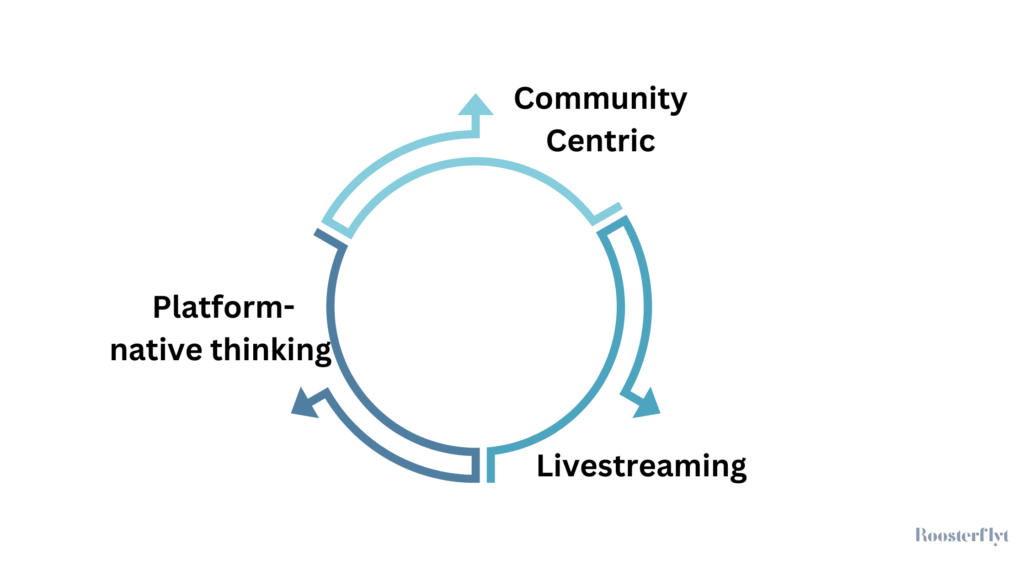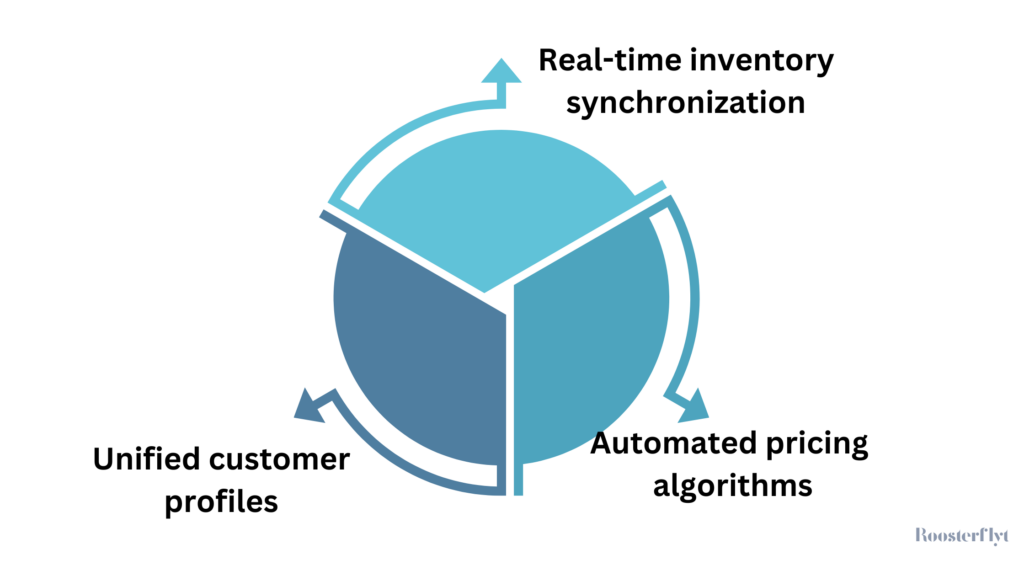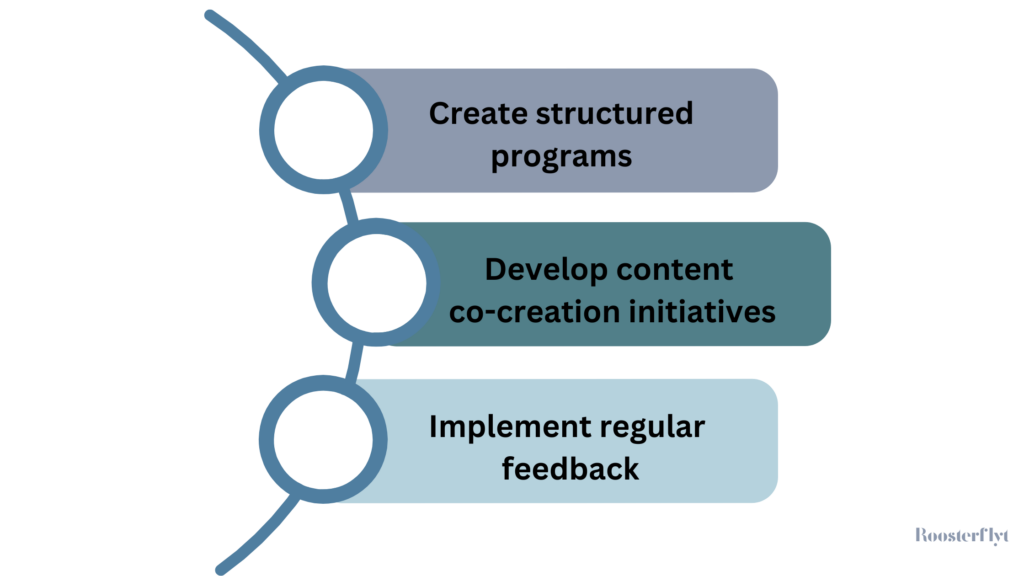In 2025, social media platforms will process $1.2 trillion in direct sales—more than the entire e-commerce market of 2016. This dramatic growth stems from several factors, including the rise of shoppable content, AI-driven personalized recommendations, and the seamless integration of payment systems within social platforms. The trend also reflects consumers’ increasing preference for convenient, immersive shopping experiences that align with their digital lifestyles. But this staggering figure isn’t just about shifting where we shop; it’s about dismantling the very architecture of retail as we know it. Every “like,” comment, and share is becoming a potential point of purchase, transforming casual social browsing into an endless shopping aisle that never closes.
The Numbers Tell a Compelling Story
While McKinsey’s research projects social commerce will reach $1.2 trillion in global sales by 2025, the real revolution lies in the behavioral shift—evidenced by phenomena like TikTok’s #TikTokMadeMeBuyIt trend, which has encouraged millions of users to discover and purchase products based on viral recommendations. We’re witnessing the emergence of a new consumer paradigm where discovery, interaction, and purchase have become a single, fluid experience. Accenture’s data shows 64% of social media users making direct platform purchases, with Gen Z and Millennial consumers poised to drive 62% of global social commerce spending by 2025.
Understanding the New Consumer Journey
The traditional purchase funnel isn’t just evolving – it’s being completely reimagined. On Instagram, 70% of shopping enthusiasts now turn to the platform for product discovery, while TikTok’s viral #TikTokMadeMeBuyIt phenomenon has generated over 50 billion views. These statistics reveal a profound shift: the emergence of a new commerce paradigm that demands an entirely new implementation approach.
This transformation isn’t without its cautionary tales. Consider Snapchat’s ambitious foray into social commerce in 2018. Snapchat launched an in-app store to leverage its massive user base and high engagement, aiming to convert social interaction into direct sales. However, the initiative faltered within months due to poor inventory management and a lack of insight into how users transition from browsing to purchasing. For businesses today, this example highlights the critical need for robust operational systems and a nuanced understanding of social engagement’s role in driving purchase intent.
Despite its massive user base and strong engagement metrics, Snapchat’s in-app store failed within months due to poor inventory management and a fundamental misunderstanding of how social engagement translates to purchase intent. This failure underscores a crucial lesson: success in social commerce requires more than just a large audience—it demands a deep understanding of how social interactions drive commercial behavior.
Redefining Social Commerce Success
The most successful brands in social commerce aren’t just adapting to change – they’re architecting it. Their approaches reveal not just patterns to follow but imperatives for building the future of social retail:

1. Community-Centric Commerce Architecture
Glossier’s journey to a $1.8 billion valuation demonstrates the power of community-first commerce. The brand leveraged a blend of user-generated content, direct consumer engagement, and inclusive messaging to foster a sense of belonging among its audience. By actively incorporating customer feedback into product development and prioritizing authentic storytelling over traditional marketing,
Glossier successfully transformed its community into brand evangelists, illustrating the profound commercial potential of a deeply engaged audience. Their success isn’t rooted in traditional social selling but in creating an ecosystem where commerce emerges organically from community interaction. However, not all community-focused attempts succeed. MVMT Watches serves as a cautionary tale of how over-reliance on influencer marketing without building genuine community engagement can lead to diminished brand value and lost authenticity.
2. The Immersive Shopping Imperative
Sephora’s livestreaming strategy, achieving 4x higher conversion rates compared to traditional e-commerce, isn’t just about better engagement—it’s about reimagining the entire shopping experience. This success directly informs our Technical Integration Revolution framework, showing how unified commerce layers must support seamless transitions between entertainment, education, and transaction.
3. Platform-Native Innovation
Nike’s success on Instagram exemplifies the crucial need for platform-native thinking in implementation approaches. Their strategy isn’t about forcing traditional retail models into social channels – it’s about building experiences that feel indigenous to each platform’s ecosystem. This directly shapes the Smart Platform Orchestration framework, where AI-driven platform selection and dynamic content adaptation become critical success factors.
The Next Wave: Beyond Traditional Social Commerce
The future of social commerce extends far beyond current paradigms. Emerging technologies will reshape the landscape in transformative ways:
1. AI-Driven Personalization Revolution
The future of social commerce will be powered by sophisticated AI systems that understand not just what consumers buy but why they buy. For example:
- Snapchat’s AR shopping features show higher conversion rates.
- Pinterest’s AI-powered recommendations increase user engagement by 40%.
- TikTok’s algorithm-driven discovery leads 79% of users to new products.
2. The Evolution of Influence
The influencer landscape is also undergoing a dramatic transformation. Micro-influencers (10K-100K followers) are achieving 5% engagement rates compared to 1.7% for celebrity accounts. This reflects a growing preference for authentic, relatable voices over traditional celebrity endorsements.
Micro-influencers, with their closer-knit communities, foster genuine connections that drive trust and engagement. Businesses can capitalize on this trend by collaborating with micro-influencers who align closely with their brand values, enabling more targeted and credible outreach. This shift reflects a broader trend toward authenticity and community-driven commerce.
3. Values-Driven Commerce
Modern consumers are increasingly aligning purchases with values. Deloitte’s research shows 28% of consumers halting purchases due to ethical concerns. Platform innovations supporting this trend include:
- Instagram’s sustainability badges driving 25% higher engagement.
- Pinterest’s sustainable product collections.
- The rise of transparent supply chain tracking.
4. Metaverse Integration (2025-2027)
The convergence of social commerce with virtual worlds will create immersive shopping experiences where consumers can interact with products in entirely new ways. For instance, a fashion brand could launch a virtual showroom within a metaverse platform, allowing users to explore and try on digital representations of clothing using avatars before making purchases.
This integration could also enable real-time customization, such as adjusting colors and styles, fostering a more engaging and personalized shopping journey. Virtual showrooms and social shopping in VR environments will become standard features rather than novelties.
5. Blockchain and Web3 Evolution
Blockchain technology will revolutionize trust and authenticity in social commerce. For instance, smart contracts can automate and secure transactions, ensuring transparency and reducing fraud. Additionally, NFTs could enable unique digital-physical product experiences, such as limited-edition items that link physical goods with verifiable digital ownership, providing added value and trust to consumers. Smart contracts will automate transactions, while NFTs will enable unique digital-physical product experiences.
Implementation Challenges
While opportunities in social commerce are substantial, businesses must prepare for key challenges:
Technical Integration Complexity
- Businesses report difficulties integrating multiple social commerce platforms.
- Legacy system compatibility issues affect many organizations.
- Real-time inventory synchronization remains a challenge for merchants.
Data Privacy and Security Concerns
- 76% of consumers express concerns about data handling in social commerce.
- Regulations like GDPR and CCPA require careful compliance.
- Third-party cookie deprecation will impact targeting and measurement.
Trust and Authenticity
- 52% of consumers question the authenticity of influencer recommendations.
- Fake reviews and counterfeit products affect 34% of social commerce transactions.
- Brand safety concerns increase as content moderation becomes more complex.
Financial Barriers and Investment Needs
- Social media advertising costs have increased by 61% year-over-year.
- Platform fees and commissions consume up to 15% of revenue.
- Integration costs exceed initial budgets for 52% of businesses.
From Framework to Future: A Clear Path Forward
Implementation demands immediate, concrete action. For enterprises entering the social commerce space, the first 90 days should focus on three core areas:
Technical Foundation
- Conduct a comprehensive audit of existing commerce infrastructure.
- Identify integration points with social platforms and establish a scalable data architecture.
Community Blueprint
- Develop a community engagement strategy that precedes commerce activities. For example, LEGO’s community platform, LEGO Ideas, invites users to submit and vote on new product designs, creating a collaborative environment that fosters brand loyalty and authentic engagement. By prioritizing user-driven initiatives like this, businesses can build a foundation of trust and connection that seamlessly supports future commerce activities.
- Focus on building authentic connections before pushing transactions.
Platform Strategy
- Select primary and secondary platforms based on audience alignment and product fit.
- Create platform-specific content strategies that respect each platform’s unique characteristics.
Scale Your Social Commerce Presence
Once your foundational elements are in place, the next phase focuses on operational excellence and growth. This critical period demands careful orchestration of technology, community, and platform dynamics.
Technology Integration and Optimization

Your technical foundation must evolve into a sophisticated commerce engine. Begin by implementing real-time inventory synchronization across all social platforms, ensuring customers never encounter out-of-stock situations. Develop automated pricing algorithms that account for platform-specific behaviors and costs. Create unified customer profiles that track engagement and purchase patterns across platforms, enabling personalized experiences at scale.
Consider how Sephora mastered this integration by building a unified commerce layer that connects their social presence with their existing retail infrastructure. Their system automatically adjusts inventory availability across platforms while maintaining consistent pricing and promotions, resulting in a 47% increase in cross-platform conversion rates.
Community Amplification and Engagement
With your community blueprint established, focus on amplifying authentic voices within your ecosystem. Create structured programs that identify and nurture community leaders who genuinely love your products. Develop content co-creation initiatives that give your community stakes in your brand’s evolution. Implement regular feedback loops that demonstrate how community input shapes your product development and business decisions.

Glossier exemplifies this approach through their “Glossier Collective” program, which transformed engaged community members into brand architects. This program generated 70% of their product development insights and drove 85% of their new customer acquisition through authentic peer recommendations.
Platform Evolution and Expansion
As your presence matures on your primary platforms, begin methodical expansion to additional channels. This expansion should follow a careful evaluation protocol that considers:
Market Position Evolution:
Assess how your brand’s market position has evolved and identify platforms that align with your enhanced presence. For instance, Nike began with Instagram but strategically expanded to TikTok only after establishing a clear understanding of how their brand resonates with younger audiences.
Cross-Platform Synergies:
Create content strategies that leverage the unique strengths of each platform while maintaining a coherent brand narrative. Develop clear guidelines for how stories and messages flow across platforms, ensuring each channel adds unique value to the customer journey.
Performance Optimization:
Implement sophisticated analytics that track not just sales but the complete customer journey across platforms. Use these insights to optimize your platform mix and resource allocation. Leading brands typically achieve 30-40% higher engagement rates through this data-driven approach to platform optimization.
Integration Orchestration
The key to sustainable growth lies in orchestrating these elements into a cohesive whole. Your technology should enable and enhance community engagement. Your community should inform platform strategy. And, your platform presence should leverage and strengthen your technical capabilities. This orchestration requires:
Unified Data Architecture:
Build systems that create a single view of customer engagement, inventory, and performance across all platforms. This unified view enables real-time decision-making and personalized experiences at scale.
Automated Intelligence:
Implement AI-driven systems that can predict inventory needs, identify emerging community trends, and optimize content distribution across platforms. The most successful brands in social commerce typically see a 40% reduction in customer acquisition costs through intelligent automation.
Adaptive Governance:
Create flexible governance frameworks that maintain brand consistency while allowing for platform-specific innovation. These frameworks should evolve based on community feedback and platform performance data.
The path forward in social commerce demands this sophisticated interplay of technology, community, and platform strategy. Organizations that master this orchestration aren’t just participating in the social commerce revolution—they’re leading it, creating new standards for how brands engage and transact in a social-first world.
This comprehensive approach to scaling social commerce presence has helped brands like Glossier, Nike, and Sephora not just survive but thrive in the evolving social commerce landscape. Their success demonstrates that when technology, community, and platform strategy work in harmony, the result is not just increased sales but the creation of resilient, growing brand ecosystems that can adapt to whatever the future of social commerce might bring.
Building the Future: The Path Forward
The $1.2 trillion opportunity in social commerce represents more than a market opportunity – it’s a fundamental reimagining of how commerce works in a social-first world. Success belongs to organizations that can build flexible, future-ready systems while maintaining authentic community engagement.
The future of commerce isn’t just social – it’s unified, adaptive, and community-driven. Organizations that embrace this comprehensive framework aren’t just preparing for the future of retail; they’re actively creating it. Those who move decisively to implement these strategies will find themselves at the forefront of the social commerce revolution, while those who hesitate risk being left behind in an increasingly competitive digital marketplace.


Leave a Reply